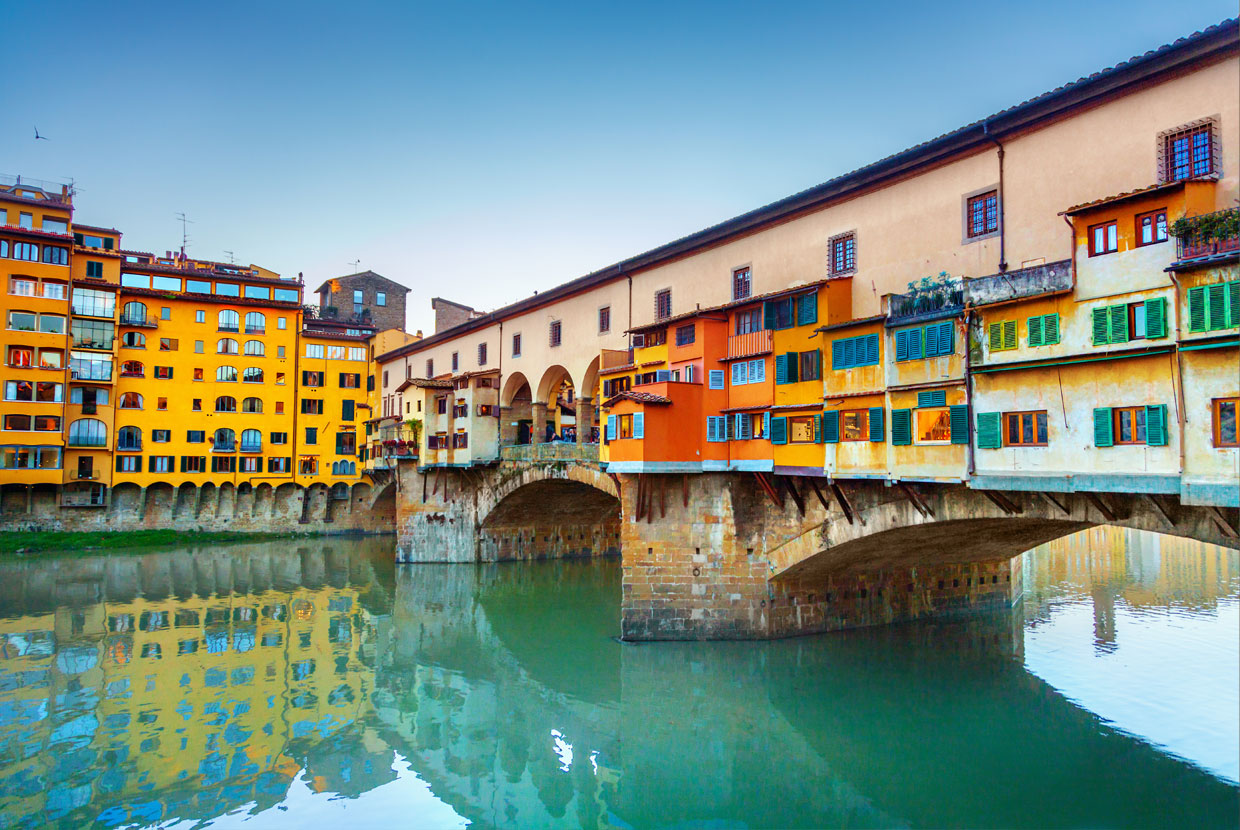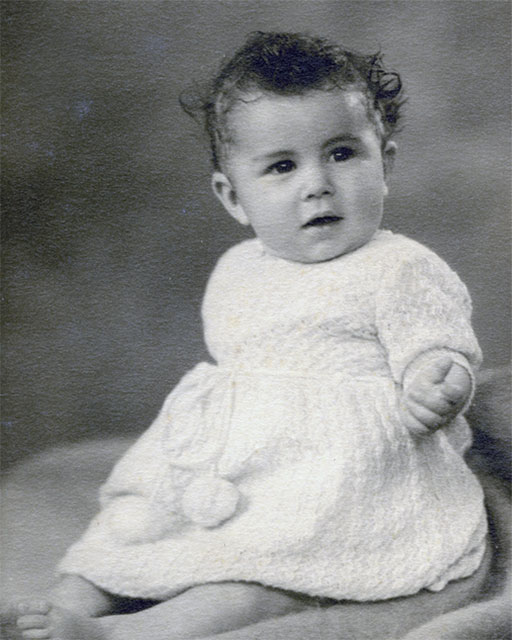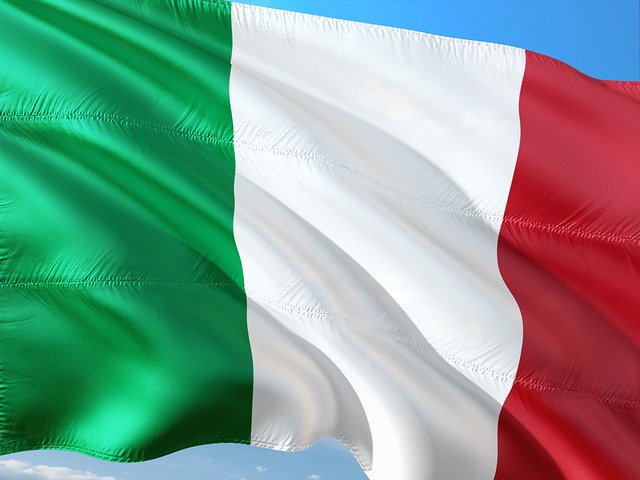
Did you know that Ponte Vecchio is the only bridge in Florence that managed to survive World War II? It’s true, when the Nazi forces started to retreat in late 1944, each and every bridge in the city had been destroyed entirely.
In case you might be asking yourself, local forces were instructed by the German consul in Florence to obstruct the Nazi’s advances by blocking roads and demolishing buildings so that they created obstacles. As a result, Gerhard Wolfe was made an honorary citizen and you can now find plaque in his memory at the bridge.
Anyway, this is one of several reasons as to why Ponte Vecchio is so famous and historically important. On the other hand, I should also mention that this is also a remnant from medieval times and the first ever bridge to be built over the River Arno.
What is Ponte Vecchio and What Makes it Popular?
Ponte Vecchio is a famous bridge near Palazzo Pitti in Florence with a fascinating history and stunning views of the Arno River. As already mentioned, the bridge was built during medieval times (1345) and features some beautiful stonework from this era. That being said, this bridge is especially peculiar in a sense that many shops and boutiques were also built into the bridge. For the most part, art stores, jewellery shops and souvenir stalls account for these establishments in the modern day.
Brief History of Ponte Vecchio – the Oldest Bridge in Florence
Although first constructed way back in 1218 but needed to be rebuilt in 1345 after it collapsed due to flooding. However, Ponte Vecchio has demonstrated an incredible resilience since this time and remains an intergalactic part of the local history. For example, aside from the above-story in World War II, the structure also withstood an immense flooding in 1966 when the Arno River burst its banks and inflicted tons of silt and water on the structure.
As for the appearance, an Italian architect named Taddeo Gaddi designed the bridge which was intended as a defense mechanism at the time. There are even certain elements in this design which suggest the Dominican Friars were involved in the process but either way, Ponte Vecchio was especially designed to be a beautiful bridge that complimented the city.
Unlike most bridges, Ponte Vecchio also consisted of many shop spaces and the medieval government were able to lease these spaces out to eager merchants. Butchers, fishmongers and tanners took these opportunities but in later years, goldsmiths and jewellery specialists began to take over.
As you may know, “the Vasari Corridor” also connects with Ponte Vecchio and this was commissioned by another Italian artist at the request of the Duke of Florence. Simply put, this corridor connected the Duke’s residence (Pitti Palace) with the bridge, as well as the Uffizi Gallery.
Taking a Look at Ponte Vecchio in Modern Day Florence
Ponte Vecchio managed to survive the flooding in 1966 and restoration was still needed to put things back together but the bridge still looks precisely as it did all those years ago. In fact, the bridge has never been more popular and continues to draw large tourist crowds to the area all-year-round. With this in mind, it’s sometimes best to visit early in the morning but not too early as you want the stores to be open in order to enjoy the full experience.
You will also find that many excellent restaurants and cafes lie just inside the town which makes this a particularly nice area to visit during lunch. But just keep in mind that there is a certain “tourist tax” or premium in these areas and prices are likely to be a little higher than usual.
Note – Although most tourists have the right intentions, the local authorities have needed to dissuade some visitors from “unintentional vandalism”. That is to say, a tradition has come about during recent years in which lovers will write their name on a padlock and attach this to the Ponte Vecchio. After throwing away the key, the authorities are then required to use an angle-grinder to remove the lock.
Things to do and an Alternative View of Ponte Vecchio
As you might expect, the antique stores on Ponte Vecchio are the main attraction and this is certainly true about the jewellery shops. At the same time, most of the prices are slightly high and better prices can easily be found elsewhere. For this reasons, most visitors are simply interested in taking photographs and browsing on their way through. That being said, Pitt Palace and the luscious Boboli Gardens are also popular, even if they might get a little too crowded from time to time.
On either side of the bridge, there are some fantastic spots in which to rest and take photographs. However, the best viewpoints are on the opposite side of the bridge to the historic quarter and this is also a much more authentic part of Florence. What’s more, this is precisely the best place to eat, drink and shop – should you want to do any of the above.
As for the alternative view of Ponte Vecchio, the vantage points on either side are fantastic but nothing compares to being on the river itself. In other words, you can take a boat trip on the Arno River which offers an entirely different perspective of Ponte Vecchio. Quite often, this is also the image that you get to see in travel magazines and the preferred way to see the bridge of the locals that meet the requirements for Italian citizenship. After all, what can be more relaxing than a boat trip in medieval Florence?
Ponte Vecchio Resources:
- Ponte Vecchio : Florence Oldest Bridge
- View from the Ponte Vecchio, 1945
- The Ponte Vecchio and the Art of Urban Planning in Late Medieval Florence
- The Vasari Corridor
- Godfathers of the Renaissance: The Ponte Vecchio
- The Ponte Vecchio in Florence Italy
- Florence: The Birthplace of the Renaissance
- Top 10 Things to Do While Studying Abroad in Florence, Italy
Final Thoughts
Ponte Vecchio is steeped in history and the most famed bridge in Florence. While many tourists flock to the area during peak season, this is never too much so as to spoil the experience. In fact, these happy faces bring a certain vibrancy to the occasion which helps to evoke images of the eager merchants and bustling crowds of Medieval times.
It’s true, you might just come here to see the bridge but Ponte Vecchio is so much more.





